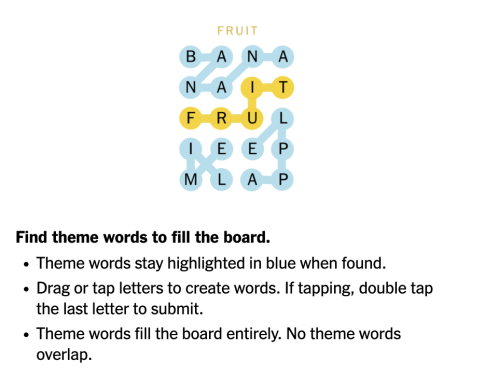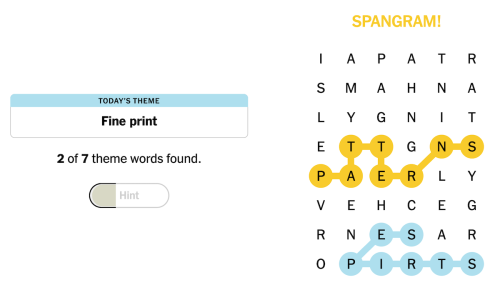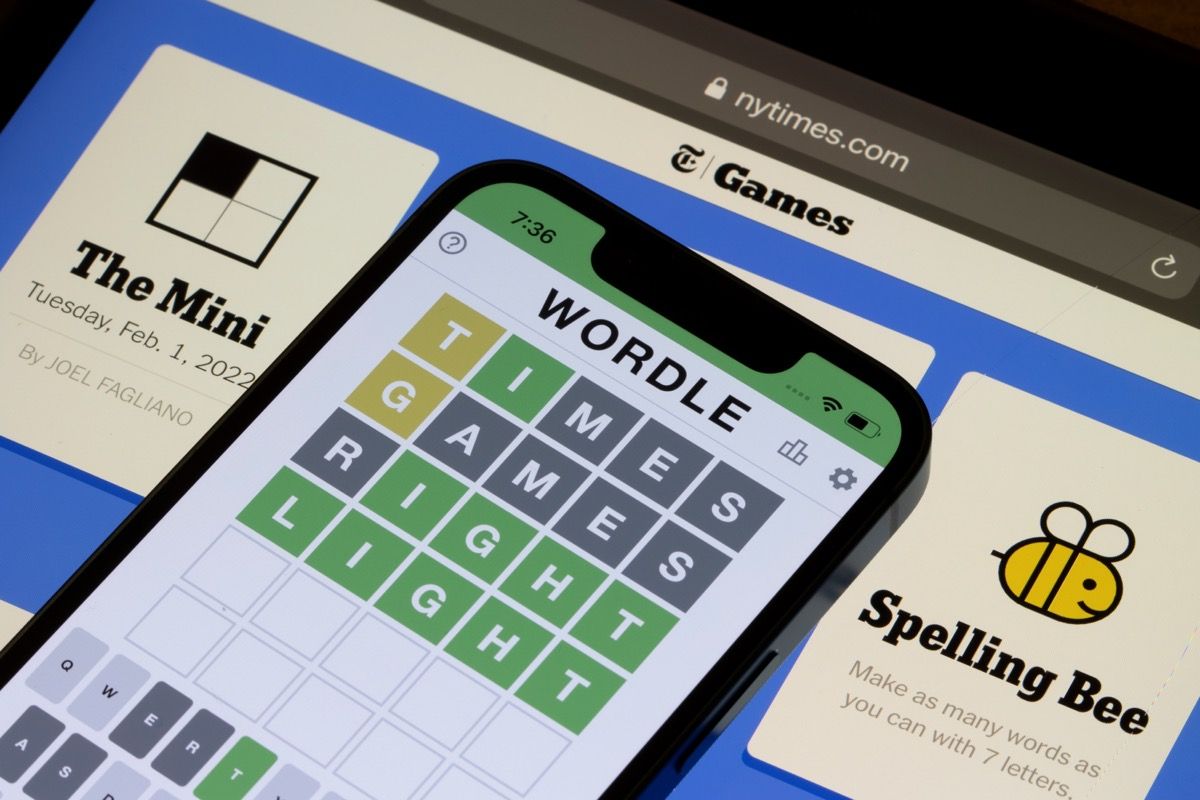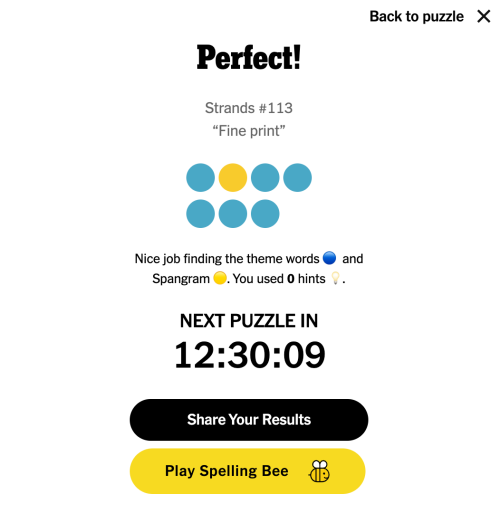How to Play the NYT’s Strands: The New Wordle Game Alternative

It seems like every year, there’s a new viral game that we’re all playing—and the latest is NYT Strands. Take a trip down memory lane, and you’ll remember FarmVille, Angry Birds, 2048, Candy Crush Saga, Pokemon GO, and countless others. However, some of the most popular and acclaimed games are related to words. Think Words With Friends, Wordfeud, Wordle, and other digital iterations of games that take cues from board games like Scrabble and traditional crossword puzzles.
Of course, The New York Times has jumped on the trend. The newspaper released its first crossword puzzle in 1943, and it’s experimented with various games ever since. In 2014, the publication officially launched NYT Games, rolling out the Mini Crossword and Spelling Bee, a game where players must make as many words as possible with a group of seven letters.
In the years since, they’ve released Letter Boxed, Tiles, Vertex, and Connections and acquired the hit game Wordle. Most recently, in March of 2024, the company launched Strands, a themed word search-like puzzle. Learn more about how to play this new game below.
RELATED: How to Play Connections: The NYT’s New Wordle Game Alternative.
How to Play Strands

The gist of Strands is simple: You’re given a board of 20 letters organized into four columns and five rows. To win, you need to create different words by connecting letters that sit side by side, diagonal, or above or below each other.
Each day, there’s a different theme, which you’re shown when you start the game. There’s also a different “spangram,” which is a word or two words that describe the theme and touch both the left and right sides or the top and bottom of the board.
For example, in the Times’ playing instructions, they note that if the spangram is fruit, the other words could be banana, pear, and apple. When you’re finished with the game, each letter on the board will be part of a word.
Fortunately, there are hints if you hit a wall. If you find three non-theme words within the game, you’ll be eligible for a hint (whether you choose to take it is up to you!). The hint will highlight the letters of a theme word, and you can put them in order from there. If you already have a hint on the board, the hint will show you the letters’ order.
RELATED: The 5 Best Wordle Words to Start With, Experts Say.
Pro Tips for Winning Strands

Getting the hang of Strands can be tricky, but don’t get discouraged if you’re not an instant pro! There are a few strategies you can use to make the game easier.
First, many players recommend finding the spangram before any of the theme words. This word is critical: It can tell you more about the puzzle’s theme and cut the board in half so you can get a better sense of where the other words might be hiding.
Another way to make your board feel smaller is by starting at the corners. Because the letters around the board’s edges have fewer options for connections than the ones in the center, they can be an easy place to begin.
You’ll also want to employ the word smarts that help you with other types of word games. For example, look for unusual letters on the game board. Because they’re rarer, they might spark ideas for words. Similarly, you can look for prefixes and suffixes, which can then reveal the other parts of the word attached to them.
Finally, use the hints when you need them! The game will allow you up to three hints, and they can be incredibly helpful—especially as a beginner.
RELATED: 7 Incredible Wordle Tricks That Will Help You Win Every Time.
How Is Strands Different from Wordle?

While both Strands and Wordle are grid- and letter-based word games, they’re still quite different.
In Wordle, you’re given an empty grid that you must fill in with words using guesses and the process of elimination. You enter a word, and each letter turns a different color: green if the letter is in the correct spot, yellow if the letter is in the word but in the wrong spot, and grey if the letter isn’t in the word.
Strands, on the other hand, joins the process of creating words with themes. You need each word on the board to match the theme and to be in the correct spot. The two games are more like cousins than twins, although they’re both great for word whizzes.
RELATED: 6 Best Brain Games to Keep Your Mind Sharp.
What’s the Point of Playing Strands?
Most people play Strands for the fun of it! However, regular practice could also improve your vocabulary, spelling, and problem-solving skills. One study published in the journal Frontiers in Aging Neuroscience found that people who do puzzles are less likely to experience cognitive decline and tend to have better overall cognitive performance.
Taking a moment out of your day to focus on a puzzle could also boost your mood and reduce stress. It’s a win-win!
Where Can I Play Strands?

You can play Strands on the New York Times website or on its app. Only one puzzle is released per day—so set yourself a recurring calendar invite to ensure you never miss one! The Times has several other word games you can play right after you finish Strands.
(If you do miss a game of Strands or want to play more than your one allowed game a day, you can play your way through the archived backlog.)
RELATED: 7 Best Brain-Boosting Crosswords You Can Play Online for Free.
Other Wordle Alternatives:
Still in the mood for a puzzle after you’ve solved Strands? You can play a range of other games with the New York Times. Each day, the newspaper publishes a mini crossword puzzle, a regular crossword puzzle, Spelling Bee, Wordle, Connections, Letter Boxed, Tiles, Vertex, and a sodoku.
You can also play Wordle alternatives outside of the New York Times. Many players enjoy Hello Wordl, Wrodeo, Picsey, Absurdle, Dordle, and Trordle.
Conclusion
Strands can be a fun way to put your word skills to the test and liven up your day. For more gaming coverage, as well as other ways to make life a little better, visit Best Life again soon!